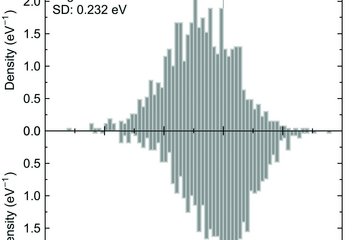All genres
321.
Talk
Werkstoffcharakterisierung und -optimierung von NiAl–Ta–Cr-Legierungen für Anwendungen im Gasturbinenbau. Werkstoffwoche '98, München, Germany (1998)
322.
Talk
Phase Equilibria in the Ternary Fe–Al–Mo System and Mechanical Properties of Selected Fe–Al–Mo Alloys. Junior Euromat `98, Lausanne, Switzerland (1998)
323.
Talk
Phase Investigation in the Ternary System Fe–Mg–Si. Junior Euromat `98, Lausanne, Switzerland (1998)
324.
Talk
Entwicklung neuer Hochleistungswerkstoffe. Schulvortrag, MPG Hauptversammlung, Gera, Germany (1998)
325.
Talk
Intermetallische NiAl-Komponenten für Systeme zur umweltfreundlichen Energiewandlung – Werkstoffcharakterisierung und Werkstoffoptimierung von NiAl–Ta–Cr-Legierungen. Workshop IP-Entwicklungen, DGM Fachausschuß Intermetallische Phasen, Geesthacht, Germany (1997)
326.
Talk
Light Intermetallics. NATO Advanced Study Institute: Light Metals and Composites, Zakopane, Poland (1997)
327.
Talk
Konstitutionsuntersuchungen in den Systemen Ti–Al–X (X = Fe, Cr, Nb) als Grundlage für die Werkstoffentwicklung. 7. DGM Fachausschuß Intermetallische Phasen, Düsseldorf, Germany (1996)
328.
Talk
Ni–Al–Ta-Phase Stability and Mechanical Properties of Selected Intermetallic Compounds. Werkstoffwoche '96, Stuttgart, Germany (1996)
329.
Talk
Messung kleiner Kohlenstoffgehalte mit der Mikrosonde. CAMUS 8, Insitut für Metallphysik, Universität Göttingen, Göttingen, Germany (1993)
330.
Talk
Experimental Investigation of High Temperature Equilibria in the Ti–Al System. CALPHAD XXII, Salou, Spain (1993)
331.
Talk
Experimentelle Bestimmung der Phasengleichgewichte in den Systemen Fe–Al–Ti und Fe–Al–Cr. 15. Vortragsveranstaltung des DVM Arbeitskreises Rastermikroskopie in der Materialprüfung, Kassel, Germany (1992)
332.
Talk
Konstitution im System Fe–Al–C. Seminar “Neue Werkstoffe“, FB Chemietechnik, Universität Dortmund, Dortmund, Germany (1989)
333.
Poster
Phase equilibria investigations in the ternary Ti–Al–Nb system at elevated temperatures. Intermetallics 2019, Bad Staffelstein, Germany (2019)
334.
Poster
Development of Fe–Al–Nb(–B) alloys for high-temperature applications. Intermetallics 2019, Bad Staffelstein, Germany (2019)
335.
Poster
Experimental evaluation of the isothermal section of the Ti–Al–Zr ternary system at 1273 K. Intermetallics 2019, Bad Staffelstein, Germany (2019)
336.
Poster
TEM of Fe-aluminides with additions of Mo, Ti and B. 26th International Conference on Materials and Technology (ICM&T26), Portorož, Slovenia (2018)
337.
Poster
Microstructure and Mechanical Properties of Fe–Al–Nb–B Alloys. MRS Fall Meeting 2016, Boston, MA, USA (2016)
338.
Poster
Corrosion Studies of Iron and Nickel Aluminides. MRS Fall Meeting 2016, Boston, MA, USA (2016)
339.
Poster
Atom Probe Tomography Investigation of the K-state and Short-Range Ordering in Fe–18Al (at.%). EUROMAT 2013, Sevilla, Spain (2013)
340.
Poster
Microstructure and mechanical properties of Fe–Al–Ti–B-based alloys with addition of Mo and W. Intermetallics 2013, Educational Center Kloster Banz, Bad Staffelstein, Germany (2013)











